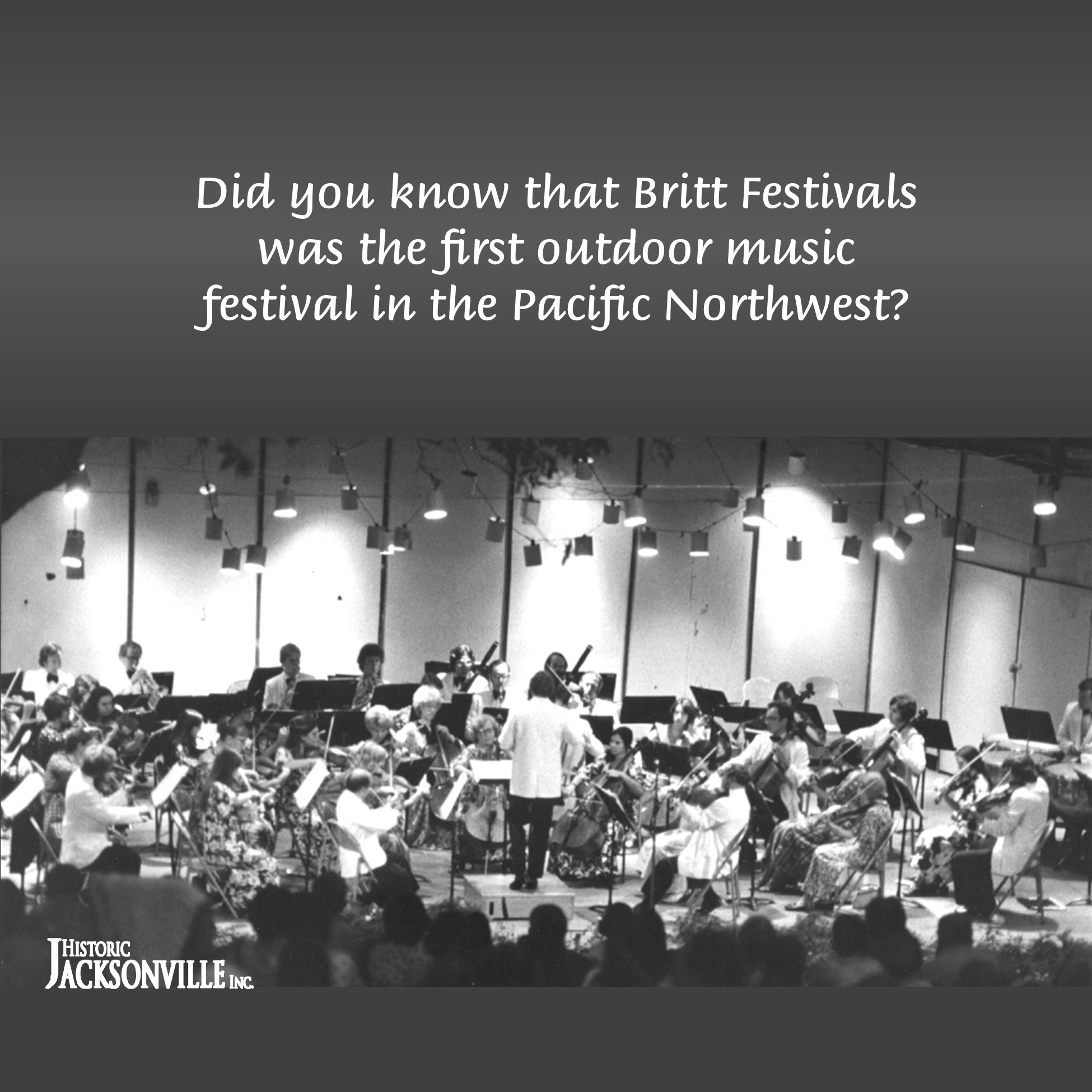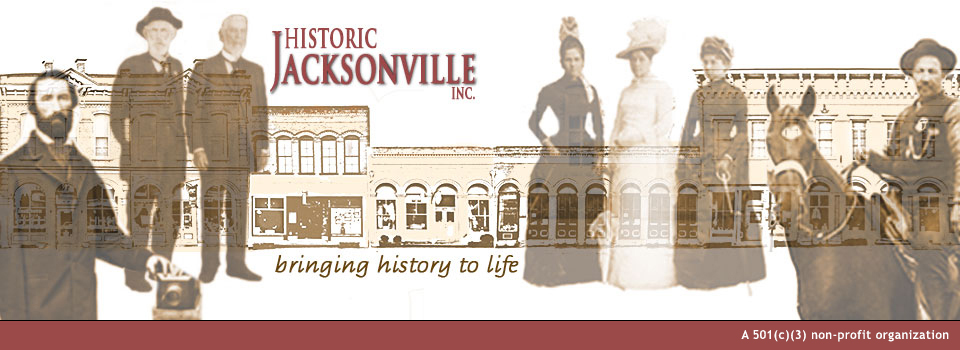It’s History Trivia Tuesday!
Historic Jacksonville shares tidbits from Jacksonville history every Tuesday on our Facebook and Instagram pages. “Like” us on Facebook at Historic Jacksonville (historicjville) or “follow” us on Instagram (historicjacksonville) and enjoy our tales and stories of the people and places that made Jacksonville the major hub of southern Oregon in the late 1800s. And visit the Southern Oregon Historical Society Library and Archives for access to the historical images included in our posts.

It’s History Trivia Tuesday! Britt Festivals has announced most of its summer season with some great shows scheduled—a little something for everyone! But have you ever wondered how Jacksonville became the home of the premier outdoor music festival in the Pacific Northwest? Like many things, it began with a dream….
After John Trudeau, principal trombonist with the Portland Symphony (now the Oregon Symphony) played trombone in the early 1950s at Massachusetts’ Tanglewood Music Festival, summer home of the Boston Symphony, he dreamed of establishing a summer music festival on the west coast.
When John’s close friend Sam McKinney discovered Jacksonville on a summer trip to Southern Oregon in August 1962, he thought of John’s music festival dream. When John and Sam drove down from Portland, the Britt hillside immediately captured their attention. Though overgrown with waist-high grass and weeds, its panoramic view of the valley, the giant trees, and the natural acoustics of the hill seemed perfect.
The idea of a music festival fit perfectly with the Mayor’s and City Council’s ambitions for revitalizing Jacksonville. Once given the green light, Trudeau realized the tremendous scope of what had to be done to plan a music festival for the following summer: catalyzing the community, recruiting a board, preparing the venue, recruiting musicians, putting together programs, just for starters. Hundreds of one-on-one conversations and frequent trips between Jacksonville and Portland were involved.
As word spread, classical music lovers from Medford and surrounding communities began to participate. Volunteers, professional and non-professional, worked side by side and the impossible was achieved.
On August 11, 1963, Trudeau stepped onto the stage as the first orchestra conductor and Jacksonville’s Britt Music Festival became the first outdoor music festival in the Pacific Northwest. It began on a temporary plywood stage strung with tin-can lights. The roof was canvas draped from donated telephone poles, and concertgoers sat on the naturally sloped woodland hillside. And the reset, as they say, is history. A beautiful view, wonderful natural acoustics, and the hard work and enthusiasm of a generous community gave birth to what has become the Britt Festivals we celebrate every summer!
